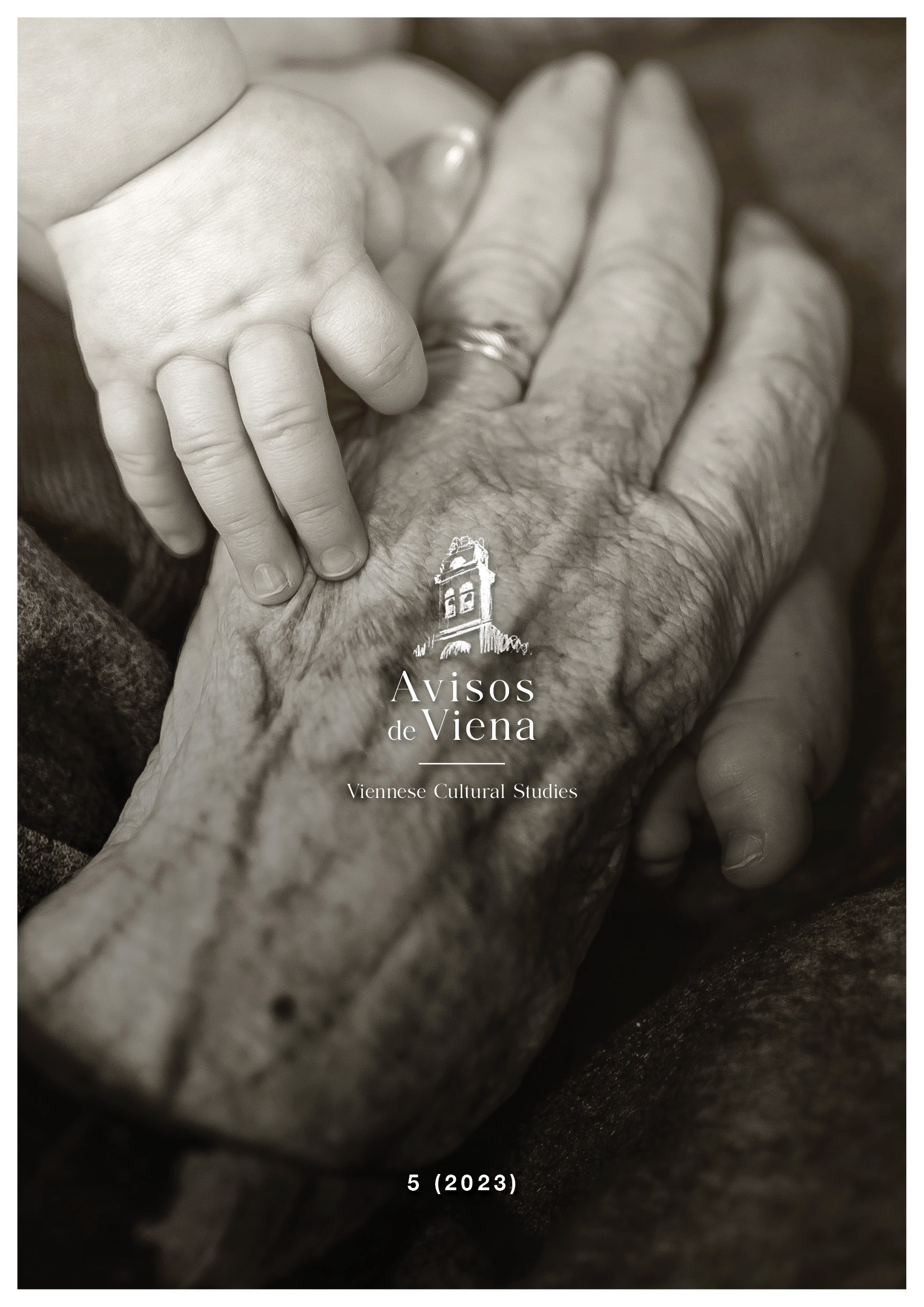«Nacido con mantillo»
Creencias populares y testimonios literarios acerca del saco amniótico
DOI:
https://doi.org/10.25365/adv.2023.5.8152Keywords:
Caul birth, Folklore, Cultural beliefs, Literary representations, SuperstitionAbstract
This article explores the cultural beliefs surrounding the birth with intact membranes, focusing on four literary examples from different cultures: "La Tragicomedia de Calisto y Melibea" (1499) by Fernando de Rojas, "Los tres pelos de oro del diablo" (1819) by the Brothers Grimm, "David Copperfield" (1950) by Charles Dickens, and "The Shining" (1977) by Stephen King. These stories depict the birth of children with intact caul membranes and the various beliefs associated with them, including love, fortune, protection against drowning, and clairvoyance. Despite modern scientific explanations, the cultural significance of caul births continues to be reflected in literature, highlighting the enduring power of superstition and folklore.
References
Alberola, E. L. (2010). Hechiceras y brujas en la literatura española de los Siglos de Oro. Universitat de València.
Birth Customs in East Anglia. (1939). Nature, 144(3644), 412. https://doi.org/10.1038/144412d0
Britannica, The Editors of Encyclopaedia. (2007). Cowl. Encyclopedia Britannica. https://www.britannica.com/topic/cowl-religious-dress
Britannica, The Editors of Encyclopaedia. (2016). Caul. Encyclopedia Britannica. https://www.britannica.com/science/caul
Burger, K. (1850). Lehrbuch der Geburtshilfe. Springer.
Burton, R. (1838). The Anatomy of Melancholy. B. Blake.
Cambridge University Press. (n.d.). Caul. Cambridge Advanced Learner’s Dictionary & Thesaurus. https://dictionary.cambridge.org/dictionary/english/caul
Cambridge University Press. (n.d.). Cowl. Cambridge Advanced Learner’s Dictionary & Thesaurus. https://dictionary.cambridge.org/dictionary/english/cowl
Crawford-Mowday, I. (n.d.). Caul: A Sailor’s Charm. The Other Within, Analysing the English Collections at the Pitt Rivers Museum. https://england.prm.ox.ac.uk/englishness-sailors-charm.html
Dickens, C. (1992). David Copperfield (Introduction and notes by Dr. A. Gavin, Illustrations by H. K. Browne). Wordworth Editions Ltd.
Forbes, T. R. (1953). The social history of the caul. The Yale Journal of Biology & Medicine, 25, 495–508.
Rojas, F. de. (2011). La Celestina. Círculo Clásicos.
Grimm, J., & Grimm, W. (1879). Cuentos escogidos de los Hermanos Grimm (Trans. by J. S. Viedma). Biblioteca Virtual Miguel de Cervantes. https://www.cervantesvirtual.com/obra-visor/cuentos-escogidos-de-los-hermanos-grimm--0/html/002acefa-82b2-11df-acc7-002185ce6064_197.html
Grimm, J., & Grimm, W. (1812). Kinder-und Hausmärchen, Band 1, 1. Auflage, Große Ausgabe. Realschulbuchhandlung.
Grimm, J., & Grimm, W. (1819). Kinder-und Hausmärchen, Band 1, Große Ausgabe, 2. Auflage. G. Reimer. https://de.wikisource.org/wiki/Der_Teufel_mit_den_drei_goldenen_Haaren_(1819)
Grimm, J., & Grimm (n.d.). Los tres pelos de oro del diablo. Grimmstories. https://www.grimmstories.com/es/grimm_cuentos/los_tres_pelos_de_oro_del_diablo
Henderson, W. (1879). Notes on the Folk-lore of the Northern Counties of England and the Borders. Folk-lore Society.
Lin, C.-H., Lin, S.-L., & Yang, Y.-H. et al. (2010). Extremely Preterm Cesarean Delivery «En Caul«. Taiqan J. Obstet Gynecol, 49(3). https://doi.org/10.1016/S1028-4559(10)60057-5
Malik, R., Sarfraz, A., Faroqui, R., Onyebeke, W., & Wanerman, J. (2018). Extremely Preterm (23 Weeks) Vaginal Cephalic Delivery En Caul and Subsequent Postpartum Intraventricular Hemorrhage and Respiratory Distress: A Teaching Case. Obstetrics and Gynecology. https://doi.org/10.1155/2018/5690125
Manrique Rondón, A. M. (2009). Vocablos castellanos de origen griego. Fundación Editorial el Perry y la Rana.
Mettmann, W. (1976). Anmerkungen zum ersten Akt der „Celestina“. Hispanic Review, 44(3), 257–263.
Monlau, P. F. (1853). Higiene del matrimonio, ó, El libro de los casados. Salon del Prado.
Moor, K. L., Persaud, T.V.N., & Shiota, K. (1996). Atlas de embriología clínica. Editorial Médica Panamericana.
Mota-Rojas, D., Orihuela, A., Strappini, A., Villanueva-García, D., Napolitano, F., Mora-Medina, P., Barrios-García, H. B., Herrera, Y., Lavallee, E., & Martínez-Burnes, J. (2020). Consumption of Maternal Placenta in Humans and Nonhuman Mammals: Beneficial and Adverse Effects. Animals, 10(12), 2398. https://doi.org/10.3390/ani10122398
Muir, E. (2005). Ritual in Early Modern Europe (2nd ed.). Cambridge University Press.
Nork, F. (1849). Die Sitten und Gebräuche der Deutschen und ihrer Nachbarvölker. J. Scheible.
King, S. (2008). The Shining. Knopf Doubleday.
Oxford Reference. (n.d.). Rolling Pins (glass). Oxford Reference. https://www.oxfordreference.com/view/10.1093/oi/authority.20110803100427901
Pitt Rivers Museum. (2008). Rolling-pin used as a charm, No. 1917.14.33. https://prm.ox.ac.uk/collections-online#/item/prm-object-61267
Ploss, H. (1911). Das Kind in Brauch und Sitte der Völker: anthropologische Studien. Grieben.
Real Academia Española. (n.d.). Enmantillado. https://dle.rae.es/enmantillado
Scanzoni, F. W. (1860). Tratado elemental y práctico del arte de los partos. Cárlos Bailly-Bailliere.
Stempfle, G., McGowen, M. R., Caravas, J. A., & Wildman, D. E. (2013). From PPROM to Caul: The evolution of membrane rupture in mammals. Applied & Translational Genomics, 2, 70–77. https://doi.org/10.1016/j.atg.2013.08.002
Thwaite, A. (2019). A history of amulets in ten objects. Science Museum Group Journal, Issue 11. https://doi.org/10.15180/191103
Downloads
Published
How to Cite
Issue
Section
License
Copyright (c) 2023 Tamara Hanus

This work is licensed under a Creative Commons Attribution 4.0 International License.
© Open Access, CC BY 4.0








